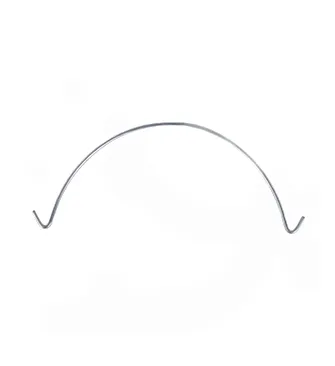-
 Phone:
Phone: -
 Email:
Email:

Exploring the Benefits of Rock Netting for Erosion Control and Soil Stability
Rock Netting A Sustainable Solution for Erosion Control
Rock netting, often referred to as rockfall netting or rockfall mitigation, is an innovative and effective approach utilized in various environmental and civil engineering projects. Primarily designed to prevent the displacement of rocks and soil in steep terrains, rock netting has gained significant attention due to its role in erosion control, slope stabilization, and environmental preservation.
The fundamental principle of rock netting is quite simple yet profoundly impactful. It involves the installation of mesh-like structures, often made from galvanized steel or high-tensile-strength synthetic materials, which are strategically placed over rocky surfaces or slopes. These nets help contain loose materials and provide a first line of defense against rockfalls, soil erosion, and natural landslides. By holding rocks and debris in place, rock netting effectively reduces the risk of falling materials endangering infrastructure, roadways, and human lives.
One of the greatest advantages of rock netting is its versatility. It can be applied in various settings – from steep mountain roads to quarry sites and even within urban environments. It is particularly useful in areas prone to heavy rainfall or seismic activity, where soil saturation can lead to increased runoff and potential landslides. The use of rock netting in these environments not only enhances safety but also promotes ecological stability by preserving natural vegetation and minimizing the loss of soil.
rock netting

Furthermore, rock netting is an environmentally friendly solution. Unlike more intrusive methods, such as heavy machinery or concrete barriers, rock netting blends into the landscape and allows for the growth of vegetation. This aspect is crucial for maintaining biodiversity and preventing habitat destruction during construction projects. Over time, as plants establish themselves over and around the netting, they help create a natural barrier that further reinforces the soil and mitigates erosion.
Another key benefit of rock netting is its cost-effectiveness. While the initial investment may seem significant, the long-term savings associated with reduced maintenance and repair costs for adjacent infrastructure can be substantial. Stormwater management and sediment control are naturally enhanced by the presence of vegetation that the rock netting encourages, mitigating the detrimental effects of runoff and erosion in surrounding areas.
In addition to its practical benefits, the implementation of rock netting serves a preventive function. In regions where historical data indicates a risk of landslides or rockfalls, early installation of rock netting can serve as a proactive measure, thereby reducing the likelihood of catastrophic failures. This focus on prevention aligns with growing trends in sustainable construction and responsible land management, where the aim is to minimize the environmental footprint while ensuring the safety and longevity of human infrastructure.
In conclusion, rock netting presents a sustainable and effective solution for managing erosion and rockfall hazards in vulnerable environments. Its blend of functionality, environmental consciousness, and economic viability makes it an attractive option for engineers, environmentalists, and communities alike. As more regions face the challenges posed by climate change and increased severe weather events, the importance of innovative solutions like rock netting will only continue to grow. By investing in such technologies, we can strive towards a safer, greener, and more sustainable future.
-
Wire Mesh for Every Need: A Practical SolutionNewsJul.25,2025
-
Steel Fences: Durable, Secure, and Stylish OptionsNewsJul.25,2025
-
Roll Top Fencing: A Smart Solution for Safety and SecurityNewsJul.25,2025
-
Cattle Farm Fencing Solutions for Maximum SecurityNewsJul.25,2025
-
Affordable Iron Binding Wire SolutionsNewsJul.25,2025
-
Affordable Galvanized Wire SolutionsNewsJul.25,2025
-
Wire Hanger Recycling IdeasNewsJul.25,2025








